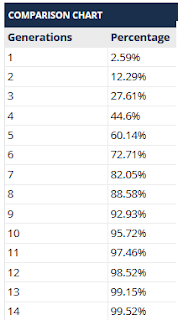The question
My father is the eldest of three. In the last two weeks we lost both his brother, Uncle Bob, and his sister, Aunt Betty. Uncle Bob was buried in Huntington West Virginia where he lived his final months with his daughter and son-in-law Linda and Mitch. Aunt Betty is in Poale Zedeck Sheraden in Pittsburgh, behind her parents. Over forty years ago, she pointed and said "That's where we will be."
 |
| Aunt Betty being brought to rest behind her mother |
After he returned home, my eldest son wrote and asked about the fact that my grandfather's grave says "Menahem Chaim." So I would like to set the record straight.
My grandfather, Morris Pickholtz, was Menahem, called Menahem Mendel by some in his close family. When he was fifty-one, he had a serious heart attack and for a while it was not clear if he would survive. I was born during that period and there was a definite possibility that I would be named for him. The name Chaim was added.
He lived another nine years and eventually died of a stroke and in the intervening years, his used Chaim Menahem. Both my father and Uncle Bob were called to the Torah as "ben Chaim Menahem." I know all this because I was there.
The actual story
When his gravestone was erected, the long-time rabbi of Poale Zedeck, Rabbi Joseph Shapiro, told Aunt Betty that his original name should appear first so his stone says "Menahem Chaim."
 |
| Four in a row. My grandparents on the left. Next to them Aunt Helen and Uncle Joe. Two brothers married two sisters. |
Background on the names
My grandfather was the youngest of ten. Before him were three sisters, three brothers and three more brothers who died before their second birthdays.
My grandfather was born in late 1896 and was given the name Mendel on his birth record.

 |
| The death of Mendel Kwoczka |
The uncle Mendel is identified explicitly as the son of Josel and Jute Lea Kwoczka and we already know them as my great-grandmother's paternal grandparents.
 |
| My grandfather and his siblings - who is named for whom |
I have no idea whom Uncle Dave and Aunt Mary (Miriam) were named for. My guess is that they are both named for people in Isak Fischel's family. We don't really have any Davids or Miriams in the early-generation Skalat Pikholz families.
Also note that my great-grandfather was called Hersch on all his European documents. On his grave as well as on the graves of my grandfather, Uncle Joe and Aunt Bessie, he is called Zvi Hirsch, while on the graves of Uncle Max, Uncle Dave and Aunt Becky, he is called Zvi. Aunt Mary's grave has no Hebrew.

Wishing everyone a good new year. May you be written and sealed in the Book of Life.
לְשָּנָה טוֹבָה תִּכָּתֵבוּ וְתֵחָתֵמוּ





